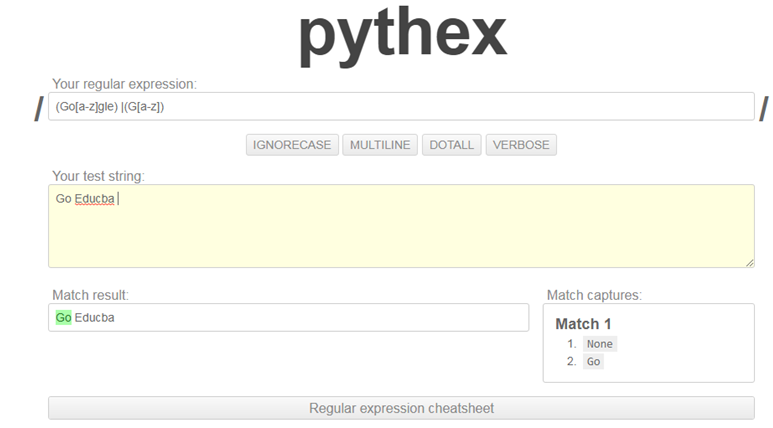
String1.replace(pattern, 'found you') // Find found youĬonst result2 = 'Hello world! '.split(regex1) Ĭonsole. replace the character with another character search if the pattern is in string variable Updated on Are you tired of spending hours searching for the correct regex pattern for your project Regex, or regular expressions, is a powerful tool for text manipulation, but it can also be overwhelming and confusing. You can open the Regex Tester in three different ways. Searches for a match in a string and replaces the matched substring with a replacement substring.īreak a string into an array of substrings.Įxample 1: Regular Expressions const string = 'Find me' The Regex Tester is a tool in RPA Builder that enables you to create and test regular expressions. Tests for a match in a string and returns the index of the match. Returns an iterator containing all of the matches. Returns an array containing all the matches. Tests for a match in a string and returns true or false. Square brackets specify a set of characters you wish to match.Įxecutes a search for a match in a string and returns an array of information. Metacharacters are characters that are interpreted in a special way by a RegEx engine. In the above example ( /^a.s$/), ^ and $ are metacharacters. To specify regular expressions, metacharacters are used. If you already know the basics of RegEx, jump to JavaScript RegEx Methods. Before we explore them, let's learn about regular expressions themselves. That will result in the appearance of the following bar: Then you just need to select the. There are several other methods available to use with JavaScript RegEx. How can I test my RegEx Use the shortcut Ctrl+F. Here, the test() method is used to check if the string matches the pattern. In the above example, the string alias matches with the RegEx pattern /^a.s$/. For example,įor example, const regex = new RegExp(/^a.s$/) Ĭonsole.log(regex.test('alias')) // true

You can also create a regular expression by calling the RegExp() constructor function.

To get more information (but with slower execution), use the exec () method.

test () returns a boolean, unlike the () method (which returns the index of a match, or -1 if not found). Using the RegExp() constructor function: Description Use test () whenever you want to know whether a pattern is found in a string.The regular expression consists of a pattern enclosed between slashes /. There are two ways you can create a regular expression in JavaScript.


 0 kommentar(er)
0 kommentar(er)
